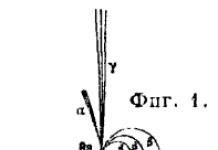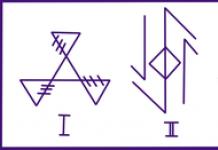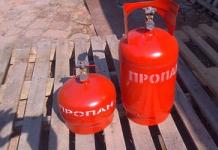Gas burners for heating boilers are primarily responsible for the efficient operation of the boiler.
The design and properties of the burner must be studied before purchasing the unit: future fuel consumption, the ability to adjust the flame intensity, and the level of automation of the boiler operation depend on this.
Operating principle and requirements
In the burner, the burned gas is combined with air. At high temperatures, a chemical reaction occurs to form carbon dioxide and water.
The process occurs with the release of thermal energy. The energy heats up the coolant in the next working unit - the heat exchanger. Combustion products are discharged to the street in one way or another.
What requirements must the burner meet:
- simple design, reliability;
- long service life;
- low noise level;
- ease of switching from one fuel to another (if it is provided for in the boiler design);
- the low emission of nitrogen oxides and carbon monoxide during combustion makes the boiler almost flawless in environmental terms. Of course, the chimney and hood must be arranged correctly.

Classification by air supply method
 This method depends on the design of the firebox.
This method depends on the design of the firebox.
The firebox can be open or closed.
In the first case, air is taken directly from the room, and combustion gases escape through a standard chimney.
The second option assumes that both air intake and smoke exhaust are carried out through coaxial tubes passing through through holes in the wall.
Low temperature burner
 In open fireboxes, gas atmospheric burners are used for heating boilers.
In open fireboxes, gas atmospheric burners are used for heating boilers.
The principle of operation is simple: gas enters the wick through an ejector, air is drawn in from the boiler room.
Ignition is carried out by small low-temperature flames. This type can be used in anything from primitive units of an old design to modern advanced models.
In addition to simplicity, low cost and versatility, atmospheric burners have another advantage: low noise level.
Possibility of using ejector burners
 If you have enough money to buy a combination boiler, you are in luck: two autonomous fireboxes, you can easily switch from wood to gas and vice versa (). But universal/combination boilers are not a budget option.
If you have enough money to buy a combination boiler, you are in luck: two autonomous fireboxes, you can easily switch from wood to gas and vice versa (). But universal/combination boilers are not a budget option.
Let's say you already have a wood-burning boiler, and you want to convert it into a gas one - more opportunities for automation, fewer problems with the supply of fuel. Gas burners for solid fuel heating boilers are usually atmospheric: the device is simple, there is practically nothing to break.
Do-it-yourself gas burners for heating boilers work on the same principle. To use such a device, it is not necessary to radically alter the entire heating unit.
If, for example, you are converting a wood-burning boiler into a gas one, you can use an ash pan to install the burner, and connect an external automation system for control and adjustment.
It is also recommended to purchase gas burners for old Russian-made heating boilers of the atmospheric type: the design features of these units do not make it possible to make the fuel chambers completely sealed, and, therefore, quite efficient.
Some solid fuel boilers (for example, pyrolysis models) are already equipped with gas burners for ignition.
Fan burner (pressurized)
 In closed fireboxes, free flow of air to the wick is impossible, so they resort to artificial injection. The firebox includes a built-in fan that forces air into the chamber forcibly.
In closed fireboxes, free flow of air to the wick is impossible, so they resort to artificial injection. The firebox includes a built-in fan that forces air into the chamber forcibly.
This burner is not as versatile as the previous one, but it has another advantage: it is easier to integrate into a fully automated boiler control system ().
The fan burner multiblock includes the following parts:
- gas filter;
- pressure regulator;
- flow regulator;
- gearbox;
- relay for turning off and forcibly turning on the burner when the pressure drops/increases;
- fan relay (turns off the burner when the fan motor stops).
It is advisable that the system have an uninterruptible power supply in case of a sudden power outage.
The disadvantages of this type of burner are high cost and complexity. Boilers need to be completely rebuilt for them; they are not suitable for all units.
Classification by type of fuel
 A gas boiler can operate on natural (main) methane gas or liquefied gas from cylinders (propane-butane). Today the difference in cost is negligible.
A gas boiler can operate on natural (main) methane gas or liquefied gas from cylinders (propane-butane). Today the difference in cost is negligible.
Since in suburban conditions it is not always possible to connect to the mains, you will most likely need a propane or butane gas burner for your heating boiler.
Structurally, these boilers are the same; the burners have their own nuances. Burners for natural and liquid gas differ in the design of their nozzles. Many units are equipped with injectors for both types of fuel.
Classification by ignition type
 Ignition for boilers can be electronic or piezo. Piezo ignition is carried out once, then the igniter is constantly burning, regardless of the gas supply. Electronic – it depends. Triggered when the supply valve opens: the fuel is ignited by an electrostatic spark.
Ignition for boilers can be electronic or piezo. Piezo ignition is carried out once, then the igniter is constantly burning, regardless of the gas supply. Electronic – it depends. Triggered when the supply valve opens: the fuel is ignited by an electrostatic spark.
The second option is considered more economical. It also extends the life of the burner. But this method is energy-dependent: with frequent and prolonged power outages, the boiler will be idle.
How to choose a burner
 When choosing, the following characteristics are important: range, power and adjustment method. The power should be greater than that of the combustion chamber: this will make it possible to further regulate the operation of the boiler over a wide range.
When choosing, the following characteristics are important: range, power and adjustment method. The power should be greater than that of the combustion chamber: this will make it possible to further regulate the operation of the boiler over a wide range.
The adjustment varies according to the number of power levels. There may be one or two stages, as well as modulated adjustment (smooth over the entire range).
Among the brands, German (Buderus, Vaillant), Italian (Lamborghini), and Slovak (Protherm) are in particular demand. Gas burners for Russian production are represented by products from Zhukovsky Machine-Building Plant, Lemarx, Conord.
It should also be noted gas burners for heating boilers Vakula. The company specializes in the production of automatic equipment for burners.
Features of gas burners with automation for heating boilers produced by Vakula:
- piezoelectric ignition;
- coolant temperature adjustment – from 40 to 90?;
- adjusting the gas supply to the fuse;
- gas flow adjustment;
- possibility of working at reduced gas pressure;
- automatic shutdown in case of reverse draft or sudden stop of gas supply.
Gas burners for floor heating boilers come in all types: atmospheric and forced, electronic and with piezoelectric ignition.
Which type of ignition is better depends on whether you want to make the system fully automated or prefer manual control and non-volatile equipment.
The choice between an atmospheric and a fan burner is largely determined by power. A floor standing boiler with an atmospheric burner produces from 10 to 80 kW or more.
The power of a boiler with a forced-air burner reaches several thousand kW. Whether you need to overpay a lot of money for a boiler with such characteristics is up to you to decide.
If you are going to add a heated floor to your heating system, then look.
Video gas burners for heating boilers. Rework.
Gas burners for boilers provide combustion of fuel to generate thermal energy. In fact, these products, together with the heat exchanger, are the main part of the gas-powered unit. The simplicity of the design does not negate their versatility and functionality. It is very important to have an understanding of the structure of the boiler burner in order to choose the right heating equipment when purchasing.
Any device designed to burn liquid and gaseous fuels has a main component - a burner. It is responsible for the formation of a uniform flame. The fuel mixture can be of different quality, but a well-thought-out method of fuel supply will ensure complete combustion of any combustible mixture.

The most important indicators of a high-quality device for burning gas are silent operation and the absence of the release of harmful compounds when burning fuel, in particular carbon monoxide. A modern household gas burner for a heating boiler is a simple device that has gone through a long process of modernization. Some old designs, produced in Soviet times, made a lot of noise and were far from safe, especially in strong winds.
Many indicators, including noise level, are influenced by the design features of the combustion chambers. In new models of burners, much attention is paid to the convenience of ignition and uniform flame supply. The design features of a gas burner for space heating are very simple:
- gas ignition is provided by the ignition system;
- the gas ignites in the nozzle;
- automation is designed to control basic indicators: temperature, uniformity of gas distribution, emergency shutdown;
- the presence of fire is monitored by a special “flame sensor”.
From the room, by-products of gas combustion must be removed outside so that harmful impurities do not fill the space. To remove gas, you need a chimney with good draft. This is the only drawback of gas heating. The gas burner device itself is constantly being improved, including the following indicators:

- heat generation schemes;
- rational flow of oxygen;
- methods for removing soot and carbon dioxide.
Gas burners for boilers: basic requirements and operating diagram
The heat released during gas combustion is concentrated in a heat exchanger, from where it is transferred to the coolant. Along with a small amount of heat, part of the combustion products is released into the atmosphere. A chemical reaction of heat release occurs: at high temperatures, the combustion gas combines with oxygen coming from the air. The operating principle of a gas burner is based on the combustion of gas and the release of heat. Water vapor and carbon dioxide are by-products of a chemical reaction that produces heat.
Among the dangerous substances are nitrogen oxide, carbon monoxide and some resinous components. Because of this, special requirements are placed on the hood and chimney - good draft is important.
According to modern requirements, in any mode, gas burners for heating boilers with automation (and other varieties) must be low toxic. It is required that during the combustion process only slightly toxic gases and a small amount of soot are released, which is a general condition for the use of most types of raw materials for heating.

Basic requirements for a boiler burner:
- accessibility for self-installation;
- clear design diagram;
- long period of operation;
- reliability of operation;
- low noise threshold;
- ease of switching modes;
- possibility of working on another type of fuel;
- complete combustion of gas;
- high environmental performance (few harmful combustion products are released).
Helpful advice! To extend the service life of the equipment by carrying out timely repairs of the gas burner for the boiler, it is important to purchase components only from trusted manufacturers.
As you know, a cheap product indicates low quality products and a short service life. Often repairs are impossible, especially if there is no warranty period and no factory certificate. There are always high-quality household gas burners for heating boilers on sale. Their price is quite acceptable for most consumers.
Main types and classification of gas burners
For a long period there was no particular abundance of this type of product on sale. The simplest boilers, titaniums and geysers were in short supply. The appearance of a gas burner for a boiler with automation was regarded as something fantastic. But these devices also required ventilation with a full chimney. There are even mobile gas-powered infrared picnic burners available these days.

Modern fuel units are very diverse. Their advantage is the almost complete combustion of fuel and the absence of the release of toxic impurities when used in closed conditions.
Traditional heating equipment is characterized by design variability:
- atmospheric boilers;
- universal;
- low temperature;
- turbocharged;
- ventilators;
- injection;
- gas burners with piezo ignition.
Do-it-yourself devices are also far from uncommon. Homemade gas burners can be assembled using drawings, diagrams and sketches of craftsmen containing detailed descriptions, as well as watching videos.
Boilers have different types of flame ignition - using a piezo lighter and using a spark when the electronics are triggered.

It is important! Piezo ignition is a one-time ignition, after which the flame is maintained in operating mode as long as there is a gas supply. This device should not be confused with gas stove burners (nozzle with divider) and grill.
The electronic ignition must be activated when the supply valve is started: the gas is ignited by an electrostatic spark. This option is considered the most economical and reliable, but during power outages the boiler often remains idle (if there is no alternative way to ensure it turns on).
Gas burner with piezo ignition and other methods of maintaining a flame
The variety of burners is determined by a number of characteristics, including the method of air injection and the design features of the firebox itself, which can be:
- open (air comes from the heated room, supply ventilation is needed, combustion products are discharged into the chimney);
- closed type.

Low-temperature gas burners (atmospheric) are mainly used in open fireboxes. They are distinguished by a simple device and a well-functioning operating principle. Gas is supplied to the wick via an ejector. In this case, the air comes directly from the boiler room where the heating equipment is installed. When ignited, small, low-temperature flames are visible.
This type of gas burners for furnaces and boilers is characterized by low noise levels, accessibility and versatility. Such a device can be adapted for combined fuel stoves, modern specialized equipment and primitive old-style boilers.
The operating principle of a gas burner with piezo ignition is quite simple, especially if the operating parameters of the heating circuit are set. The sensor detects a decrease in temperature, the stop valve and ignition are activated. The blue fuel entering the burner ignites, releasing heat.
Flame control in gas equipment occurs in different ways. In some units everything looks very primitive, others are equipped with electronics. Sometimes complex schemes are used even when upgrading old equipment using a gas burner for a boiler with your own hands.

Attention! If this is an inexpensive burner, then, in all likelihood, it contains a simple thermocouple that will require immediate replacement.
Improved boilers with “smart” options are equipped with an ionization controller that is sensitive to changes. This ensures that the gas is shut off in the event that the flame goes out and there is not enough oxygen for the combustion process (the fuel runs out).
Electronics also respond to increased concentrations of foreign impurities in the blue fuel itself and the combustion byproduct. The gas will be shut off (this is thought out in the SABC gas burner), and the ventilation will begin to operate at full capacity.
Helpful advice! Before cleaning the burner of a gas boiler, it is important to understand its structure by studying the technical documentation containing a description of its operation. Each type of product has its own design differences.

Burners for atmospheric boilers and manual gas burners
Operation due to the natural flow of oxygen ensures complete combustion of fuel; combustion products are removed through a conventional chimney. The operation of the equipment has been simplified with the use of atmospheric type devices and special gas burner nozzles.
Attention! The only condition for the device to operate on oxygen taken from a heated room is excellent supply ventilation.
Important advantages of boilers with atmospheric gas burners:
- independence from power sources, which is important when working in rooms without electricity;
- high reliability (no complex components requiring frequent repairs);
- low noise threshold;
- structural simplicity;
- affordable price.
Important! Information for those who are interested in how much a simple gas burner costs - its price starts from 250 rubles. And the cost of the Ugop-P-16 “Ugolyok” gas burner, for example, is approximately 1000 rubles.

The disadvantages of atmospheric units include:
- the need for a full-fledged chimney that removes smoke and fuel suspension to the outside;
- relatively low efficiency (compared to modernized samples);
- the likelihood of incomplete combustion of fuel due to lack of oxygen;
- difficulty adapting to other heat sources;
- the need to install fresh ventilation or a small window.
Helpful information! Burners with electronic ignition require a high-voltage converter operating from the mains. This distinguishes them from such simple devices as manual gas burners.
Use of ejector burners in finished and converted boilers
A combi boiler with a ceramic gas burner justifies the cost with its versatility, although it is considered an expensive option. Far from budget equipment has a lot of advantages, including autonomous fireboxes:
Related article:
Types of boilers. Types of gas boilers, their features, replacement and installation. Top 10 gas boilers.
- for solid fuel;
- with a gas burner.

With this equipment, you can easily switch to coal and firewood, and profitably utilize any organic matter. This is a good opportunity to save on gas, especially in a private home, where there is always the opportunity to find something for recycling.
To supply gas to the burners, additionally equipping them with automation, wood-burning boilers are often equipped with special nozzles or wicks. For these purposes, a simple atmospheric or ejector burner (with air suction) is suitable. In this case, there is no need to redo the entire boiler, since the rest of the boiler functions on the same principle: fuel is burned to obtain thermal energy to warm up the coolant.
Helpful advice! For old domestic equipment, atmospheric gas burners are more suitable, since complete tightness cannot be achieved in them due to the design specifics.
Equipment for automatically ensuring the combustion process in combined boilers can be purchased additionally if you need to convert a wood-burning firebox into a gas boiler. Some models of solid fuel boilers, including pyrolysis boilers, are equipped with a gas burner, the flame of which is required when igniting.

Fan or inflatable burner with air injection
The firebox of some devices has a built-in fan (air blower). Its function is to forcefully provide oxygen to the ignition chamber. In this case, oxygen supply is forced, the volume is controlled automatically.
This is the need for closed-type chambers where there is no free access to the air mixture, which creates conditions for a higher temperature of the gas burner. The lack of natural access is compensated by using a simple fan-type device.
Such burners have their pros and cons. But they are not so universal, since they have to use artificial injection, which requires additional energy consumption. An important advantage is that the fan devices are fully adapted to automate the operation of the boiler. In such models, a mixture of fuel and oxygen is obtained directly at the outlet.
Multiblock gas burners for space heating with air transportation by means of a fan have the following structure:

- a fan relay that turns off the burner when the blade motor stops;
- pressure regulator;
- block filter;
- valve to turn the burner off/on (when the pressure changes);
- fuel consumption option;
- gearbox;
- uninterruptible power supply (needed in case of a sudden power outage, but not all devices have it).
Note! Inflatable or fan burners are often part of boiler room equipment with a fairly high automation threshold, which is necessary to avoid serious accidents.
The servo drive controls the position of the damper, so there is no need to adjust the burner and additionally monitor the operation of the boiler. Regulation of the portions of incoming oxygen necessary for complete combustion occurs automatically.
A significant disadvantage of this type of gas burner is the price due to the complex design of the product.

Gas burners are not suitable for “homemade” products, especially when they want to convert a solid fuel boiler into a universal unit, and its heat exchanger requires good insulation. The burners here are energy-dependent; most often they are equipped with a backup power source.
General classification of gas burners by fuel type
Country houses cannot always be supplied with natural gas supplied from a public main. Therefore, the burners are varied in terms of using different types of fuel. If the fuel comes from the gas main, propane-butane gas burners are most likely used for heating boilers.
Trunk methane gas is the most affordable natural fuel for boilers. However, now there is no big benefit in the price of liquefied blue fuel (propane-butane mixture). General heating provided by the main pipeline is also expensive.
Gas boilers operating on different types of fuel mixtures have approximately the same design. There is a slight difference in cost, but it is also insignificant (equipment for liquefied fuel will cost more). The burners themselves are slightly different, having different nozzles for liquid fuel and blue gas.

Propane burners require adjustment to this type of fuel with the installation of a nozzle. When burning, the flames give off a yellowish color, and more soot accumulates in the chimney. The jet is responsible for normalizing pressure.
Modern burners operate in a wide temperature range – from -50 to +50 °C. Some equipment can be adapted for other types of energy carriers:
- used oil;
- diesel fuel;
- fuel oil;
- kerosene;
- propane butane base;
- Arctic diesel fuel.
Modern devices often include both types of injectors or universal equipment for fuel types, making them easy to reconfigure.
Attention! Some craftsmen offer gas burners for boilers with their own hands (for solid fuel equipment).

It is safer to purchase simple gas equipment adapted for bottled gas. Homemade equipment, although more affordable, is unsafe! Usually, “reworks” are carried out on the basis of old units.
Turbocharged types of gas burners and their design differences
Among modern gas equipment, many experts prefer closed-type burners for turbocharged boilers. They are self-sufficient in design and require a compact chimney, which can even be diverted into general ventilation during autonomous heating.
A heating unit with a special closed-type combustion chamber receives oxygen from the outside - through a special supply pipe (coaxial chimney). Combustion products are removed approximately in the same way. The heating equipment is controlled by a fairly powerful automatic fan.
This is interesting! A coaxial chimney is a device created on the “pipe-in-pipe” principle. A turbocharged boiler can even operate in a bunker or other sealed room without windows or a ventilation shaft.

Such a device is much more expensive than atmospheric heating equipment. However, for an additional fee, the buyer receives a number of advantages, including autonomous operation in a residential area. This device, thanks to automatic control, has a high level of safety.
Turbocharged equipment has the highest efficiency and a flexible temperature scheme. The fuel burns almost completely, which is important for environmental performance. There are also disadvantages, including design complexity, which causes difficulties during installation and repair.
Gas burners for combined equipment are most often used in solid fuel boilers. This is a rather complex unit, so all components must meet certain efficiency and safety requirements. The automatic device is capable of switching from one type of fuel to another for uninterrupted heat supply. Pellet and pyrolysis boilers are designed according to this principle, equipped with gas for burners that drives the ignition process.
How to choose the right gas burner for a stove or boiler
Gas equipment is associated with a certain risk if used incorrectly. It is necessary to select the stove gas burner (component parts) correctly, and for this you need to have a general understanding of the design differences between the devices. When purchasing, it is important to know what types the product is divided into according to the method of burning fuel in the boiler:

- atmospheric burner;
- inflatable.
Not every manufacturer should be trusted; it is better to purchase from official dealers who provide certificates and all technical documentation. If you purchase low-quality components or components, you will have someone to file a claim with.
Gas heating equipment has different features, including the method of ignition and flame adjustment. When purchasing, experts recommend paying attention to the following indicators:
- heat generator power;
- demands on the quality of the gas mixture;
- possibility of automatic regulation;
- the authority of the company and the country of origin;
- price-quality ratio".
Burners for floor-standing boilers are offered in the following options:
- atmospheric;
- supercharged,
- piezo;
- electronic.

You can select a burner based on power settings:
- 1-speed;
- 2-speed;
- with a smooth transition;
- with automatic adjustment.
The flow of the gas mixture in different boilers is:
- straight-through;
- twisted (more powerful).
The most popular are gas burners for boilers made in Germany (Buderus, Vaillant), Slovak (Protherm) and Italian (Lamborghini). Among the products produced by domestic companies, Lemarks, Vakula and Conord equipment have proven themselves well. Among the industrial devices are burners of the “Impulse” series.
The duration and productivity of any unit depends on the correct choice and proper operation. Gas equipment is purchased not according to the principle of “cheaper” or “more powerful”, but according to the type of boiler available.
Today, more and more home owners, when choosing a heating system for their own home, prefer solutions based on a boiler. We are talking about gas boilers, although some people prefer electricity or wood. And the gas option is popular due to the fact that this type of fuel is one of the most affordable. And its consumption will be significantly lower than that of similar options. But the effectiveness of the described device will largely depend on the good performance of such an element as the burner.
Design and principle of operation
In order to completely burn the gas and obtain the maximum amount of heat from it, it should be mixed with an air mass that has a certain content of oxygen, which is an oxidizing agent. The ideal mixture should burn in the final stage with an almost colorless fire with a hint of blue and a maximum temperature. The gas burner will be responsible for this entire process. If we talk about its structure, then it cannot be called complex.
Any burner consists of the following elements:
- nozzles;
- ignition mechanism;
- a sensor that monitors the presence of flame;
- automatic system that monitors temperature indicators.


It should be noted that modern designs must meet certain requirements:
- long period of use;
- silent operation;
- complete burnout of gas.

In older models of boilers, burners were used for a long time, since at that time quite high demands were placed on the quality of materials and the elements themselves. Now many technologies and materials are not used, and the quality of burners has dropped somewhat. Experts recommend buying products that are manufactured by well-known companies that use high-quality spare parts.
If we talk about silent operation, then this is a really important point. Many people remember Soviet-made instantaneous water heaters, where the flame noise was great. And the models produced now are quite quiet.


When selecting a boiler, you need to pay attention to ignition. It should be carried out without popping or other noise. This is a very important point, because there is no way to regulate it. Therefore, if the burner behaves this way, you should not buy it. The design of the combustion chamber will also affect the noise level.
The third point that needs to be mentioned is complete gas combustion. This is also important and should not be neglected, because the burner must burn gas in full with the least release of combustion products and other compounds, including carbon monoxide. Other parts of gas boiler equipment will also influence this point. It is also necessary to arrange good gas removal using a chimney with excellent draft.

The operation of the burners is simple - fuel enters through the ejector. The fuel supply rate will be very high and for this reason low pressure is formed, which allows air to be mixed with gas. The resulting mixture goes through the tubes to the holes, thanks to which it ends up in a special firebox, where it is ignited using electric ignition.
Varieties
Now let's talk about burner categories. It is better to use the model specified by the manufacturer in the regulatory documentation. The heat exchanger, like the boiler design, is usually created with the installation of a specific burner device in mind.
If we take into account the purpose, then there are two categories of burners.
- For high power industrial boilers. In this category, injection fan burners are usually installed. Their productivity will range from 120 to 250 kW.
- Household options. In this case, the power will not be more than 120 kW. This includes an atmospheric boiler burner. Its disadvantages will be high fuel consumption and serious installation requirements.


If we talk about the type of fuel, as a classification criterion, there are two types of burners:
- operating on liquefied gas;
- on a natural analogue.


The difference between burner types will be in gas operating pressure and nozzle sizes. In household designs from European brands, universal options are usually installed that can work with both types of gas.
There are also injection diffusion and other solutions with preliminary partial or 100% mixing. But such options are used only in industrial models. It should be noted here that the type of burner will influence the design features of the heat exchanger, combustion chamber, gas outlet option, and exhaust system.


By type of burner regulation there are:
- 1-stage;
- 2-stage;
- 2-stage with gas modulation;
- modulated.



It depends on the control type whether an open or closed burner will be used. The category of the device will affect the standards that will apply to the installation and operation of such a boiler.
Now let's talk in more detail about each of the categories. One-step solutions are the most common option. Their operating principle is that they turn on and off. The frequency of changing operating modes will depend on how quickly the coolant cools, as well as on the operating mode.

The features of such burners are:
- work regardless of the availability of electricity;
- high gas consumption;
- excellent reliability;
- presence of an ignition mechanism.

If we talk about two-stage burners, they are suitable for boilers where there is precise control of gas flows. From the name you can understand that such a device can operate in two modes. Usually we are talking about 30 percent and 100 percent power.
The features of this solution will be:
- constant burning;
- heating of the coolant by one hundred percent;
- models with automatic control control the transition from one mode to another.


The last type is modulating burners. They are considered the most economical. Changing the burner power is usually carried out in automatic mode.
Features of the modulating burner are:
- presence of automatic control;
- versatility;
- high efficiency.

Selection of burners for different types and models of boilers
When choosing a burner, you should pay attention to its various characteristics - the fuel supply model, the option of mixing gas with air, compatibility with various categories of devices. We will tell you about the most interesting models.
- KChM burner. It is used in boiler units converted from conventional fuel to LNG or conventional gas. It usually has automation and has three nozzles. It is used in boiler units of the “Contour” model or similar options.

- Burner "Hearth". It is a pneumomechanical type device with an automatic operating mode. It turns off on its own if:
- the fire went out;
- gas supply stopped;
- there is no necessary traction.
This model has a gas pressure controller. This makes it possible to achieve equal burning of the fire, even if any malfunction occurs in the mechanism. Such solutions are easy to maintain due to the fact that soot does not accumulate in the convective part.

- Another burner that I would like to talk about is the model "Kupper". This option is universal and is suitable for combined boilers, solid fuel designs from Kiturami or Russian-made models of the Conord brand. The advantage of this burner will also be the ability to install it without plumbing or welding.
- Another quite popular solution is burner for DKVR. This block device is used where there is forced air supply. This solution is used for steam boilers for industrial use and having the appropriate power. Their efficiency is about 94-95 percent. A similar design works either in a diffusion or in an inflatable version. To increase its efficiency, powerful Italian fans are often used.


- Another category - burners for KVS. They are used for domestic needs and are solid fuel. Considering that there is no need to use overly powerful equipment to heat rooms, atmospheric or injection solutions are used. When selecting a burner element, you should pay attention to power and safety in use.

How to do it yourself?
Let's consider an example of manufacturing a gas burner for a boiler unit operating on solid fuel. It is better to use a valve from an oxygen cylinder made according to the standard, VK-74.
To create a burner you must complete the following steps.
- The outlet pipe should be equipped with a fitting, which will be connected to the reactor using a hose.
- We mount a cap on the inlet pipe part connected to the cylinder, where there is a small hole for connecting to the nozzle. It can be found on the stove or in a blowtorch.
- Now a steel pipe with a length of one hundred millimeters and a wall thickness of two millimeters is welded to the cap.
- There should be a distance of one and a half centimeters between the nozzle and the cap, through which access to oxygen will be provided. For this reason, you first need to attach 3 small pieces of wire to the cap, and then the pipe itself.
One of the most important elements of all gas heating devices is the burner. It is located under the heat exchanger. The purpose of a gas burner for a heating boiler is to ensure fuel combustion and generate thermal energy. The heat is then absorbed by the heat exchanger and sent to the heating system.
Design features of the gas burner
This element of the unit creates a stable flame; it is in the burner that the fuel entering the device is burned. Then the resulting heat moves upward, where there is a heat exchanger through which the coolant liquid moves. Combustion products and excess heat escape into the atmosphere in one way or another.
The gas burner has a simple design; it consists of several main components, including:
- Nozzle - used to release gas.
- Ignition system – designed to ignite gaseous fuel.
- A sensor that monitors the presence of a burning flame.
- Automation system – monitors temperature indicators.
This is how the design looks simplified.

Modern gas burners for heating boilers are devices that must meet a number of requirements:
- Silent operation. Is an important quality. Many consumers are familiar with Soviet-era instantaneous water heaters, in which the flame made a lot of noise. But modern models operate relatively quietly. Also, when choosing a device, you should pay attention to the ignition, since there should be no explosions or pops. The noise level is additionally affected by the design of the combustion chamber.
- Long service life. In older models of gas units, the burners worked for a long time, since at that time the equipment was made to last. Nowadays such technologies are not used, so these elements installed in gas boilers break down quite often. In this case, experts recommend purchasing devices manufactured under well-known brands, for which they use high-quality components. You should not buy Chinese equipment of unknown manufacture and cheap domestically produced boilers, since they often have short-lived burners installed.
- Complete combustion of gaseous fuel. This is an important requirement, since the burner must burn natural gas completely with minimal release of combustion products and other associated compounds, including carbon monoxide. The degree of combustion is also affected by other components. We should not forget about arranging high-quality gas removal - for this you need to make a chimney that has good draft.
The operating principle of a gas burner is simple:
- The unit detects the presence of a discrepancy between the temperature in the heating circuit and the indicators set by the equipment users.
- After opening the gas valve, fuel enters the burner.
- At the same time, the ignition system is activated.
- Once the gas is ignited, a flame appears.

At the same time, the flame sensor starts working, which monitors its presence: if the fire suddenly goes out, the automation shuts off the fuel supply. Once the heating system reaches the required temperature, the gas supply stops.
Manufacturers implement the function of monitoring the presence of flame in burners in different ways. In some units, a simple thermocouple is installed, and electronic-based automatic boilers are equipped with an ionization control system.
Types of gas burners
For a long time, only simple, non-automated boilers without complex electronics were presented on the heating equipment market in the country. They required the installation of full-fledged chimneys, and placed them in well-ventilated rooms. Today there are devices on sale that operate in almost any conditions. Traditional models are being implemented alongside them.

There are the following types of burners:
- atmospheric;
- closed type;
- with a burning igniter;
- with electronic ignition.
Atmospheric burners
The presence of an atmospheric burner significantly simplifies the design of heating devices. Such devices operate as a result of the natural flow of oxygen, and chimneys are installed to remove combustion products. Since oxygen is taken from the room, it is necessary to provide high-quality ventilation.
The advantages of boilers with an atmospheric gas burner are as follows:
- A simple design device, which has a positive effect on the cost of the equipment.
- Low noise level. There are no additional fans in the device, only the roar of the flame is heard.
- High degree of reliability. Since the device consists of a minimum number of components, it rarely breaks down.
- Energy independence. Since the operation of the unit does not depend on the availability of electricity, it can be used in homes where the power supply is turned off.

There are also negative points:
- Low efficiency. Boilers with closed burners have a more advanced design, they are more efficient and economical.
- Mandatory installation of a chimney, which must be brought to the roof, which entails additional financial costs.
- The boiler should be installed under a gas burner in a room specially designed for this purpose, where there is a window and ventilation, and such requirements are sometimes problematic to fulfill.
Also, the possibility of incomplete combustion of gaseous fuel cannot be ruled out.
Closed type burners
Currently, heating equipment is equipped with closed burners. Such boilers are called “turbocharged”. Their operation requires the installation of compact chimneys, which are often installed directly outside the wall when the house is just being built. In this case, the creation of ventilation ducts and a chimney system is greatly simplified.
A boiler equipped with a closed combustion chamber is a heating unit in which a gas burner is placed in a special chamber. Oxygen enters it from the outside through a coaxial chimney. It also removes products formed during fuel combustion.
All flows in the coaxial chimney are controlled by a powerful fan, in which the speed is regulated automatically. It is a structure consisting of pipes of different diameters. They are placed one inside the other.

A similar chimney serves to take in air and remove combustion products. They bring it out through a nearby wall, maintaining a distance of half a meter from the window openings; sometimes more stringent requirements are imposed on installation.
Gas appliances with closed burners have a number of advantages:
- Possibility of placement in rooms for different purposes - in the kitchen, in the bathroom, in the basement and even in the bedroom.
- Ensuring increased safety, since the fuel burns in a completely isolated chamber. If the gas suddenly goes out and the automation does not work, the gas-air mixture will be removed outside the building or room.
- High efficiency rate. Units with a closed burner type are more efficient, but this circumstance does not apply to all boiler models.
- Effective temperature control, for which they use a fan shaft speed control system.
- Environmental friendliness - gas burns almost completely.

There are also disadvantages:
- Complex device - a closed gas burner for a household boiler has a complex design, which will complicate repair work.
- Reduced degree of reliability. The greater the number of parts, the more often the equipment breaks down.
- High price. A “turbocharged” unit costs 10–15% more than its naturally aspirated counterparts.
- Increased noise level, which depends on the selected modification. The fan built into the system makes a loud noise.
- Energy dependence. In the event of a power outage, the equipment stops working. Purchasing an uninterruptible power supply will help solve this problem.
Despite the presence of the above disadvantages, these types of boilers are quite in demand among consumers. Closed-type burners are equipped with condensing units, which are characterized by high efficiency due to the use of heat released by combustion products.
Variety of burners by ignition type
The simplest method of ignition is considered to be with a wick - with a burning igniter. When the automation is triggered, the gas is ignited with a wick, after which the device begins to heat the liquid. There are two negative aspects to this - increased fuel consumption and an insufficient degree of safety, since the igniter may go out. Primary ignition is performed with matches or using a piezoelectric element.

The first method is used in non-volatile devices - they do not have electronics, and the second option is when automatic gas burners are used for heating boilers. In this case, in addition to electronics, flame ionization control modules are installed on board.
Different types of fuel can be used to ignite the burner. The natural gas supplied from the main line is of greater purity; it is supplied at optimal pressure, so the flame in the device does not smoke. Such boilers are connected to the network without making any modifications.
There are burners on sale that can operate on propane. This will require reconfiguring the system and installing the nozzle. When burned, the flame gives off a yellow glow, and there is an increased deposition of soot on the walls of the chimney. The jets normalize the propane pressure to a normal value; they are supplied as a kit or purchased.
Burners for universal equipment
Gas burners intended for solid fuel heating boilers have a complex design. They are intended for converting heating appliances from one type of fuel to another. Thanks to the special design, after purchasing a universal unit that runs on wood, when a gas main appears in a populated area, it can be converted to operate using natural gas.
They produce automatic gas burners for solid fuel appliances in accordance with the fan circuit. After supply, the gas is mixed with air, and then the prepared fuel-air mixture is sent to the nozzle. Here it is ignited, and a flame of high temperature is formed.

An automation system, a powerful fan, a special filter and a gearbox are mounted on board the gas burner. For the unit to function, a power supply is required. The device itself has a modular (removable) design.
An example of such a device is a product for Cooper boilers. The device itself is pellet, but it can be converted to natural or liquefied gas if a replacement burner is connected to it.
Homemade burners
Some home craftsmen make their own gas burners for heating units, in particular for solid fuel appliances. Experts advise against doing this, as their use is unsafe. In addition, no one will allow such a structure to be connected to the gas main.
A homemade burner is not the best option. It is best to buy a simple, non-volatile gas device and convert it to bottled gas.
In every gas boiler, regardless of its model, the main working unit is the gas burner. Its function is to ensure the rapid preparation of a special air-fuel mixture, with its subsequent entry into the combustion chamber, as well as maintaining a stable flame throughout the entire period of operation of the heating equipment. It should be noted that the reliability of operation, as well as the efficiency of fuel consumption, is determined precisely by how high-quality the gas burner for the gas heating boiler is installed in this model. Therefore, when choosing a boiler, it is imperative to study the type and features so that the characteristics meet the requirements.
Device
Complete combustion of fuel, accompanied by effective heat transfer, is possible only with the correct ratio of the air-gas mixture. This fuel mixture burns with an almost colorless flame that has a characteristic bluish tint. When it burns, the maximum heating temperature is observed.
Based on the method of supplying air and oxygen, their mixing, as well as the technology for forming the flame, experts distinguish several types of gas burners. However, as a rule, preference is given to only two varieties - atmospheric and fan. When choosing one of these types, you need to take into account that for an atmospheric burner you will need a chimney to constantly maintain natural draft, and when using ventilation burners you only need to take the coaxial chimney outside the building.
In order for heating equipment to operate efficiently and without failures, in addition to the combustion process, it is necessary to control the output thermal power. Therefore, the main parameter of burners for a gas boiler is power control technology. Depending on this characteristic, the following types of devices are distinguished:
- Single-stage - devices can operate exclusively in the mode of complete combustion of the incoming gas. Their advantage lies in their simple design and low price. However, they have increased fuel consumption and sudden changes in coolant temperature inside the heating boiler.
- Two-stage - devices in which it is possible to operate at both maximum power and approximately 40-60%.
- Modulation - in such equipment, a two- or three-stage method is combined with smooth adjustment of the gas supply. In it you can change both the combustion field and the size of the torch flame.
- Equipment with a smooth change in the size of the flame - the volume of gas supplied can be adjusted to the full volume of the burner.
Features, pros and cons of atmospheric burners
The operation of the burner is similar to the mechanism of a simple ejector, in which a gas-air mixture is prepared from gas and air coming directly from the room. The combustion field consists of several parallel rows of channels with separate nozzles.

The popularity of atmospheric burners is due to the fact that these devices have a number of important advantages:
- Simple design;
- Compactness;
- Affordable price;
- Quiet operation;
- Adjusting the output power of the burner does not require special skills;
- Simple installation technology;
- Lack of energy dependence;
- Technological maintenance can be performed independently at home.
But when choosing such equipment for heating a house, it is necessary to take into account that a chimney is required for operation, and the quality of its operation directly depends on the shape of the individual elements and the correctness of its installation.
Features, pros and cons of fan burners
These devices are distinguished by a complex design and automated control system, which ensures almost complete control of all processes in heating equipment.

Among the main advantages of burners of this type it should be noted:
- Ability to adjust operating power over a fairly wide range;
- Ensuring full control of the preparation of the gas-air mixture;
- Fuel combustion control;
- Economical fuel consumption;
- The device helps to increase the efficiency of a gas boiler;
- Can be used in buildings without a chimney;
- There is no need to reconfigure or change the design of equipment to use combined fuel.
However, there are also disadvantages: volatility, high price, additional installation of a voltage stabilizer and UPS, the need for the help of service centers to perform maintenance.
Automation
Tasks such as preparing a fuel mixture or regulating the combustion process are performed thanks to the design features of the burner, the size and shape of the output injectors and nozzles. The device automation is designed to perform the following functions:
- Setting the optimal thermal power;
- Constant support of igniter combustion;
- Ignition of the spark gap flame or a special piezoelectric element;
- Regulation of pressure inside the gas line;
- Monitoring changes in heating system temperature;
- Providing traction;
- Elimination of violations in the functioning of the fan;
- Reaction to flame extinction;
- Shutting off the supply of natural gas in an emergency;
- Sending a problem signal to the display.
Settings
Setting up atmospheric burners involves adjusting the location of the damper for air flow, as well as adjusting the position of the nozzle responsible for gas dosage and the nozzle. When the burner operates correctly, the flame is uniform and has a bluish tint.
If a fan-type device was selected, then the initial setting will only be needed for the damper at the air flow inlet to regulate their volume. The minimum requirements are determined by the fact that the system is automated and equipped with an electronic control unit, which almost completely eliminates manual control of the mechanical components of the heating equipment. In addition, such burners have a reducer that is responsible for the normal composition of the gas-air mixture at the inlet.
Popular models
Many companies produce gas burners for heating. Therefore, on the market you can find devices of a variety of models, differing from each other in design, parameters, operating principles and technical characteristics. Among the most popular models of domestic production are “Ochag”, “UGOL-P”, “KCHM” and “Kupper”.
In addition, users often prefer burners from foreign manufacturers: Lamborghini, Cib Unigas, Buderus, and Weishaupt.
 Gas burner for boiler Cooper AGG-26K
Gas burner for boiler Cooper AGG-26K How to clean?
During active use, devices must undergo regular maintenance, including cleaning. If their design includes a fine filter, then it needs to be changed or cleaned. If this part is missing, the nozzles are cleaned from dirt, dust, and oily substances.
This procedure is carried out using compressed air, the pressure of which should not exceed the values specified by the manufacturer. In addition, many use regular air flow. The nozzles are cleaned with a polymer brush with short bristles of medium hardness. Additionally, it is recommended to use special detergents. Over time, the internal cavity of the outlet injectors becomes clogged with foreign substances, so it is necessary to check their condition.
When choosing a gas burner for a gas boiler, you should take into account that atmospheric devices are much easier to clean, because the structure is completely disassembled. This can be done even at home. But for maintenance of fan burners, you must definitely contact a service center.


























